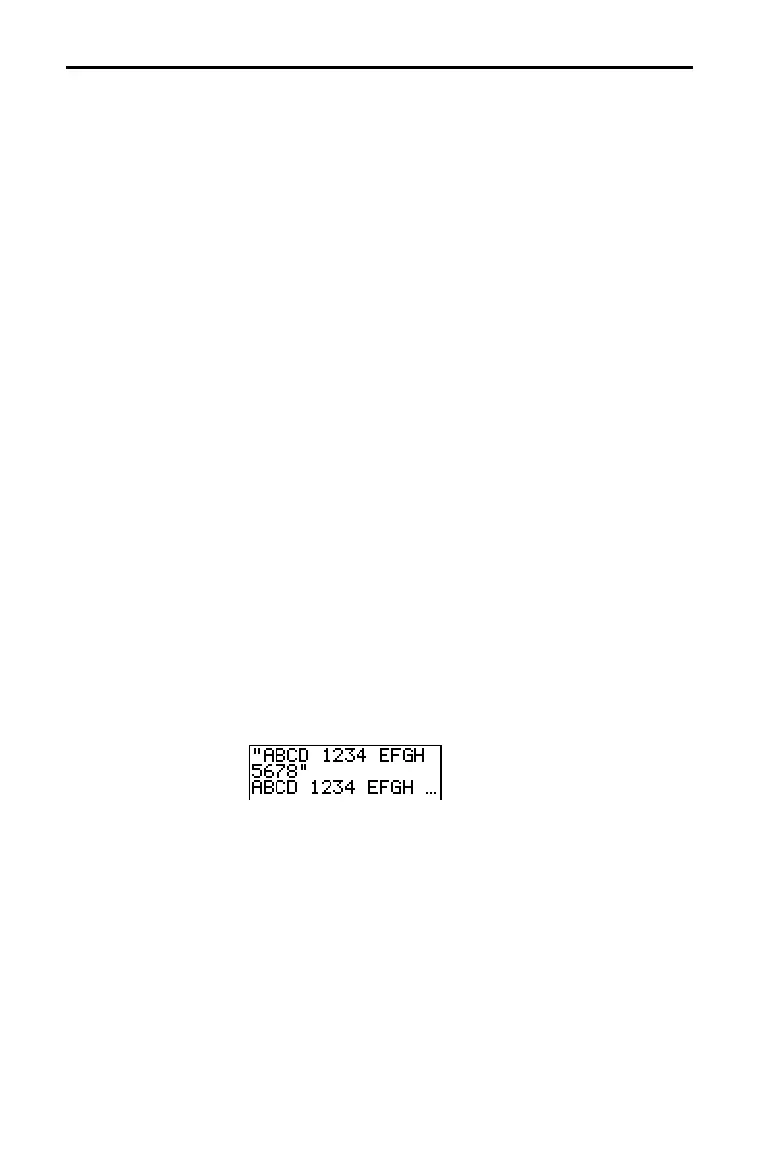CATALOG, Strings, Hyperbolic Functions 15–3
82500E~1.DOC TI-83 international English Bob Fedorisko Revised: 10/28/05 9:25 AM Printed: 10/28/05 9:25
M Page 3 of 10
A string is a sequence of characters that you enclose within
quotation marks. On the TI-82 STATS, a string has two primary
applications.
• It defines text to be displayed in a program.
• It accepts input from the keyboard in a program.
Characters are the units that you combine to form a string.
• Count each number, letter, and space as one character.
• Count each instruction or function name, such as
sin( or
cos(, as one character; the TI-82 STATS interprets each
instruction or function name as one character.
To enter a string on a blank line on the home screen or in a
program, follow these steps.
1. Press ƒ [
ã] to indicate the beginning of the string.
2. Enter the characters that comprise the string.
• Use any combination of numbers, letters, function names,
or instruction names to create the string.
• To enter a blank space, press ƒ [
'].
• To enter several alpha characters in a row, press y
[
A.LOCK] to activate alpha-lock.
3. Press ƒ [ã] to indicate the end of the string.
"string"
4. Press Í. On the home screen, the string is displayed on
the next line without quotations. An ellipsis (
...) indicates
that the string continues beyond the screen. To scroll the
entire string, press ~ and |.
Note: Quotation marks do not count as string characters.
Entering and Using Strings
What Is a String?
Entering a String

